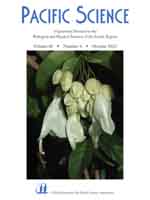Conservationists previously described the need for research into using translocation to rescue threatened populations. We conducted an experimental translocation of Tuamotu kingfishers (Todiramphus gambieri gertrudae) to provide foundational information about movement ecology and inform conservation planning for the critically endangered bird. We captured and radio-marked mated pairs of kingfishers on Niau Atoll, French Polynesia, where approximately 125 individuals compose the last remaining population of Tuamotu kingfishers. One bird from each pair was translocated to a reintroduction site on the opposite side of the island, and the other pair member was released back onto the home territory. Home-ranging pair members remained on territories and used habitats disproportional to availability, as determined by Brownian bridge analysis. Translocated individuals made multiple forays from the release site to explore the surrounding landscape, during which habitats were used in proportions similar to availability. The exploratory behavior resembled that of dispersing juvenile birds, which suggested that adults retain the ability to explore, and that dispersal theory may be a useful basis for planning translocations. Vacancies on donor territories were filled within 1–10 days. Our results indicated that translocation was not effective for range expansion on Niau because birds readily returned to donor areas; however, translocation to other islands remains a potential conservation strategy for Tuamotu kingfishers.
How to translate text using browser tools
1 October 2012
Translocation of Tuamotu Kingfishers, Postrelease Exploratory Behavior, and Harvest Effects on the Donor Population
Dylan C. Kesler,
Allison S. Cox,
Guillaume Albar,
Anne Gouni,
James Mejeur,
Chelle Plassé
ACCESS THE FULL ARTICLE

Pacific Science
Vol. 66 • No. 4
October 2012
Vol. 66 • No. 4
October 2012




